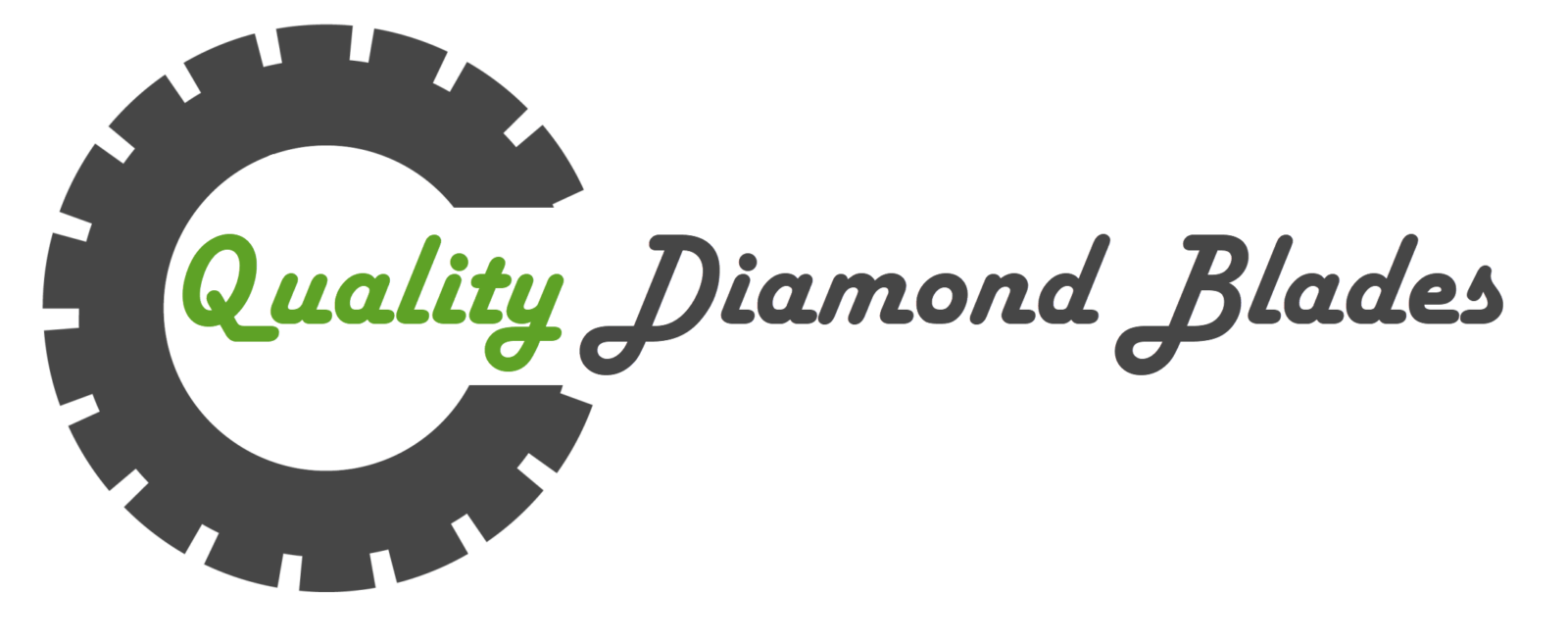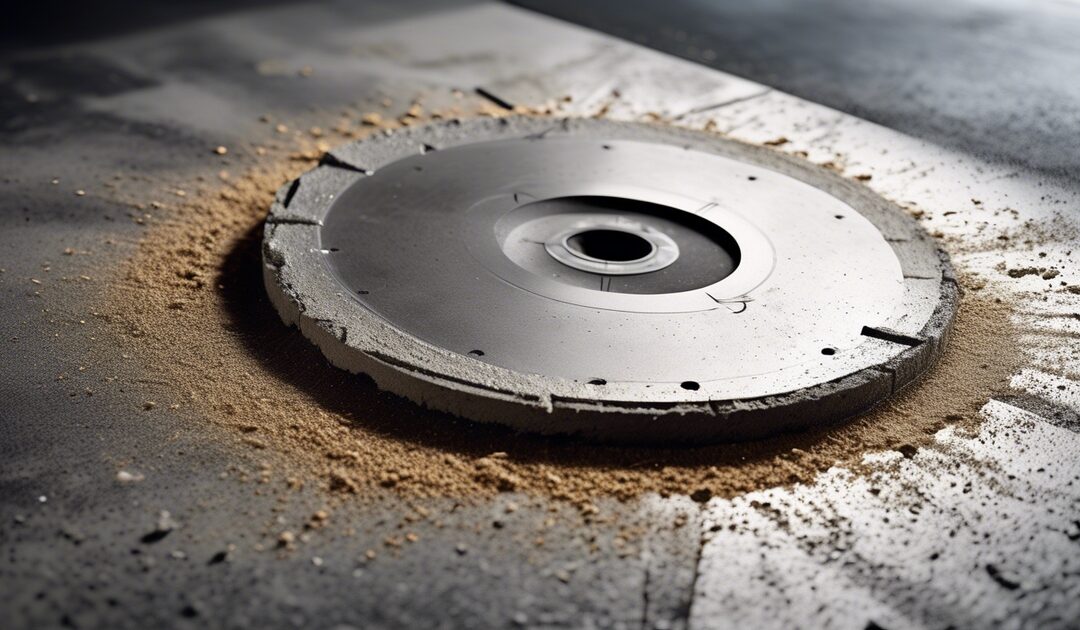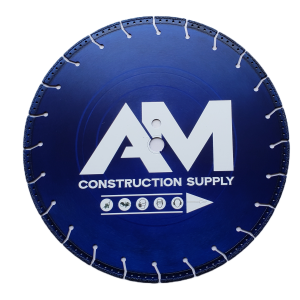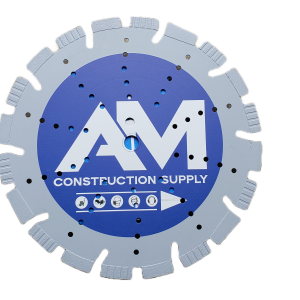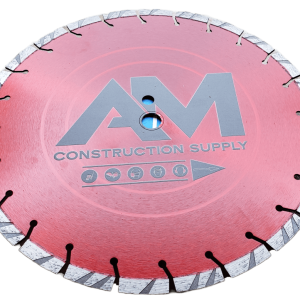Choosing the right tools for concrete work can mean the difference between a flawless finish and a botched job. When it comes to cutting through tough materials like concrete, not all diamond blades are created equal. The best 12-inch diamond blade for concrete stands out for its durability, precision, and efficiency. This guide dives deep into what makes these blades the go-to choice for professionals and DIY enthusiasts alike. We’ll explore key features, performance metrics, and how to select the perfect blade for your project. Whether you’re tackling a small home renovation or a large-scale construction project, understanding the essentials of a high-quality diamond blade can transform your work from good to exceptional.
Key Takeaways
- Opt for a 12-inch diamond blade when you need precision and efficiency in cutting concrete, as its size offers a balance between depth of cut and manageability.
- Understand the different types of diamond blades available and select one based on the specific type of concrete you’ll be cutting, ensuring sharper and more precise cuts.
- Prioritize quality when choosing a diamond blade for concrete to ensure durability, safety, and cost-effectiveness in the long run, as highlighted in customer testimonials.
- Utilize the essential buying tips provided, such as checking the blade’s compatibility with your saw and considering the material you’ll be cutting, to make an informed purchase.
- Follow the installation and usage tips to enhance safety and extend the lifespan of your diamond blade, ensuring optimal performance during real-world applications.
- Reflect on real-world applications and customer testimonials to understand the practical benefits and reliability of using a high-quality 12-inch diamond blade for your concrete cutting needs.
Choosing Diamond Blades
Blade Materials
Diamond stands out as the preferred material for cutting through tough materials like concrete. Its unmatched hardness and durability make it ideal for high-demand construction tasks. Metal composites play a crucial role too. They support diamond particles, ensuring they remain fixed to the blade’s edge.
Different blade materials vary in effectiveness. Some cut through concrete faster but wear out quickly. Others last longer but cut slower. The balance between these factors is key.
Cutting Performance
Diamond blades offer superior cutting performance on concrete. Their design allows for fast, precise cuts without much effort. The blade diameter and diamond quality significantly impact this performance.
Cutting speed and precision depend on these factors. Wet cutting methods generally offer more efficiency than dry ones. They reduce dust and extend the blade’s lifespan by cooling it during cuts.
Durability Factors
The diamond concentration directly affects how long a blade lasts. Higher concentrations mean a longer-lasting blade. However, this also impacts cost.
The blade’s core material is crucial in resisting wear and tear. Innovations like etching help reduce heat buildup, which can damage the blade over time. This extends its life, offering better value for money.
Size Considerations
Choosing the right blade diameter is vital for optimal cutting results on concrete. The size influences the depth of cut and overall performance.
However, not all blades fit all power saws. Compatibility issues can arise, affecting efficiency and safety during use.
Advantages of 12-inch Blades
Enhanced Precision
Diamond blades, especially the 12-inch variety, stand out for their precise cuts in concrete. They achieve this without causing chipping or breaking. This precision owes much to the blade thickness and edge design. These factors work together to ensure clean cuts through even the toughest materials.
Proper blade selection is crucial for specific cutting tasks. It significantly enhances precision. Users must choose the right blade based on the material and the type of cut they need. This ensures optimal performance and accuracy.
Versatile Applications
One of the standout features of 12-inch diamond blades is their versatility. They can slice through a wide range of materials, from hard concrete to delicate marble. This versatility extends to various power tools as well. Whether it’s a circular saw or a grinder, these blades adapt seamlessly.
Their suitability for both professional construction projects and DIY home improvements highlights their broad appeal. Whether you’re laying a new patio or cutting custom countertops, a diamond blade makes the job easier.
Improved Efficiency
The unique properties of diamond blades significantly reduce cutting time and effort. This efficiency isn’t just about speed; it’s also about cost-effectiveness. Thanks to their durability and performance, these blades offer great value over time.
Moreover, using water in wet cutting presents environmental benefits by reducing dust. This method not only keeps the workspace cleaner but also prolongs the blade’s life by keeping it cool during operation.
Sharper Cuts with Diamond Blades
Cutting Technology
Diamond blade technology has seen significant advancements. Laser welding and sintering are at the forefront. These processes have revolutionized how blades are made, resulting in stronger and more durable products.
They also improve cutting performance dramatically. The development of blades tailored for specific materials and applications is another leap forward. This specialization ensures that whether the task involves concrete, asphalt, or tile, there’s a diamond blade engineered to handle it efficiently.
Edge Quality
The design of a blade’s edge plays a crucial role in cut quality. There are three main types: segmented, turbo, and continuous. Each type affects the finish of the cut surface differently.
Segmented edges are great for speed but may require some post-cut smoothing. Turbo edges offer a balance between speed and smoothness. Continuous edges provide the cleanest cuts, ideal for materials that show every mark. Choosing the right edge type based on the material ensures minimal need for post-cut processing.
Material Compatibility
Diamond blades excel in cutting through hard materials like concrete, granite, and brick. Their versatility is unmatched, but selecting the right blade for the job is key. The hardness and abrasiveness of the material dictate which blade to use.
For instance, softer materials might need blades with harder bonds to prevent rapid wear. Conversely, hard materials require softer bonded blades for efficiency. Adjustments in cutting speeds or cooling methods might be necessary when switching between materials to achieve optimal results.
Types of Concrete Blades
Segmented Rim
Segmented rim blades stand out for their ability to cut through concrete and other hard materials efficiently. The design features distinct gaps or segments along the rim, which play a crucial role in enhancing the blade’s performance. These gaps allow for improved air flow around the blade during operation. This air flow acts as a cooling mechanism, preventing the blade from overheating.
The segments also assist in removing debris from the cut. As the blade spins, these gaps eject particles and dust, maintaining a clear cutting path. This debris removal system significantly boosts cutting efficiency, allowing for quicker progress through concrete and reducing wear on the blade.
Turbo Blades
Turbo blades offer a unique combination of speed and precision. Their design includes a continuous rim edge that is serrated, resembling a turbofan’s blades. This structure allows turbo blades to slice through dense materials like concrete and stone rapidly. The serrations increase the contact area with the material, resulting in faster cutting speeds.
Despite their rapid cutting capability, turbo blades are known for leaving a smooth finish. This makes them ideal for projects requiring both efficiency and aesthetics. The continuous rim edge ensures that cuts are not only quick but also clean and precise.
Continuous Rim
Continuous rim blades are designed for tasks that demand high precision and minimal chipping, such as tile cutting. Unlike segmented or turbo blades, they feature an uninterrupted edge that slices through materials smoothly. This continuous edge is key to achieving clean, precise cuts, making them perfect for delicate materials.
However, due to their design, continuous rim blades can overheat if not used properly. It’s essential to use water when operating these blades to cool them down and prevent damage. The water also helps reduce dust creation during cutting. By keeping the blade cool and minimizing chipping, continuous rim blades provide a high-quality finish unmatched by other types.
Essential Buying Tips
Assess Needs
Before diving into a purchase, it’s crucial to assess the specific needs of your concrete cutting project. The type of material you’re dealing with, be it standard concrete or reinforced concrete, plays a significant role in choosing the right blade. Consider the depth of cut required and the finish you desire. A blade that matches these characteristics will deliver optimal performance and results.
For instance, a deeper cut necessitates a blade with a larger diameter, while a smoother finish may require a blade with finer diamonds. Understanding these nuances ensures that you select a 12-inch diamond blade tailored to your project’s requirements.
Compare Features
Once you’ve pinpointed your needs, comparing the features of different blades becomes paramount. Blade diameter is just the starting point. The edge type—whether segmented, turbo, or continuous rim—impacts how cleanly and quickly you can cut through concrete.
Moreover, not all diamonds are created equal. The quality of the diamonds embedded in the blade affects its cutting efficiency and lifespan. Look out for innovative features like heat-reducing etching, which can significantly enhance performance by preventing overheating during long cuts. This comparison phase is vital in steering you toward the best 12-inch diamond blade for your concrete projects.
Read Reviews
In today’s digital age, user reviews are gold mines of information. They offer insights into how well a blade performs in real-world conditions and its durability over time. Reading reviews from users who have tackled similar materials and cutting conditions can provide valuable perspectives.
Look specifically for feedback on how well blades handle the type of concrete you’re working with. Whether it’s cutting through thick slabs or achieving precise edges on decorative projects, user experiences can highlight strengths and potential issues you might face. This step is essential in making an informed decision and finding a diamond blade that meets your expectations.
Why Choose Quality Diamond Blades
Superior Craftsmanship
Quality diamond blades stand out because of their superior craftsmanship. This trait directly impacts the blade’s performance and longevity. Manufacturers known for their craftsmanship invest in high-quality materials and advanced manufacturing processes. These efforts ensure that each blade meets rigorous standards.
Choosing blades from reputable sources guarantees consistent cutting quality. It also significantly enhances safety during operation. Superior craftsmanship means fewer defects and a reduced risk of blade failure. This reliability is essential when working with tough materials like concrete.
Proven Durability
Durability is a key factor when selecting a 12-inch diamond blade for concrete. Blades with a proven track record can withstand tough cutting conditions without compromising performance. This resilience translates to cost-effectiveness over time.
The durability of a diamond blade hinges on two main factors: diamond concentration and the quality of the base material. High diamond concentration ensures efficient cutting, while robust base materials prevent premature wear and tear. Together, these elements contribute to a blade’s ability to deliver long-lasting performance.
Exceptional Value
The initial cost of a high-quality diamond blade might seem steep compared to standard options. However, its exceptional value becomes apparent through its performance and durability benefits. High-quality blades require fewer replacements and minimal maintenance, leading to significant long-term savings.
When choosing a diamond blade, it’s crucial to look beyond the price tag. Consider the overall value that the blade brings to your projects. A quality blade ensures efficient, precise cuts and stands up to demanding conditions, offering true value for money.
Installation and Usage Tips
Proper Installation
Following the manufacturer’s guidelines for blade installation is crucial. Many users overlook this step, leading to reduced blade performance and potential safety hazards. A common mistake is mounting the blade in the wrong direction, which can severely impact its cutting ability and increase wear.
Proper installation not only ensures safety but also maximizes the blade’s lifespan and cutting efficiency. It involves checking that the blade is securely attached and aligned correctly on the saw. This step guarantees that your 12-inch diamond blade for concrete cuts through materials smoothly, with minimal resistance.
Safe Operation
Wearing appropriate safety gear cannot be overstated when operating diamond blades. Eye protection, gloves, and ear protection are essential to guard against flying debris and loud noise. Safe operation practices include being mindful of your surroundings and ensuring a stable stance before making any cuts.
It’s also vital to match the blade to the material you’re cutting. Using a diamond blade designed for concrete ensures optimal performance while reducing the risk of accidents. This alignment between tool and task not only keeps you safe but also preserves the integrity of both your workpiece and equipment.
Maintenance Advice
Routine maintenance, such as cleaning your blade after use and inspecting it for signs of wear, prolongs its life. Dirt build-up can hinder performance, while unnoticed damage might lead to unexpected failures during operation.
Storing blades properly is equally important to prevent them from becoming damaged or deformed. A dry, secure place protects them from environmental factors that could compromise their structure over time.
Regular maintenance not only extends the life of your 12-inch diamond blade but also ensures consistent performance across projects. This attention to care translates into smoother operations and superior results in concrete cutting tasks.
Real-World Applications
Construction Projects
In the realm of professional construction, diamond blades play a pivotal role. They are essential for cutting through tough materials like concrete and shaping stone with precision. The selection of these blades greatly depends on the scale of the project and the hardness of the material being cut.
For large-scale projects, heavy-duty diamond blades are necessary. These ensure efficiency and accuracy in cutting through thick concrete slabs. On smaller projects, a lighter blade may suffice. The benefits of using diamond blades in construction cannot be overstated. They significantly enhance work speed and ensure clean cuts, making them indispensable in modern construction work.
DIY Home Improvements
Diamond blades also find their place in home renovation projects. Their versatility allows for a wide range of applications, from cutting tiles to shaping stones for landscaping. For DIY enthusiasts, choosing the right diamond blade is crucial. It not only ensures safety during use but also guarantees success in the project.
Investing in quality diamond blades can elevate the outcome of home improvements significantly. Whether it’s creating a new patio or renovating a bathroom, these blades make precise cuts and shape materials with ease. This investment not only saves time but also contributes to achieving professional-level results in DIY projects.
Professional Use Cases
Beyond construction and home improvement, diamond blades serve specialized industries with high efficiency. In gem cutting, for instance, precision is paramount. Diamond blades provide that precision, allowing for intricate cuts without damaging valuable gems. Road construction is another area where these blades shine. They cut through asphalt and concrete quickly, reducing project timelines.
Selecting industry-specific diamond blades is essential for optimal performance. This ensures that the blade matches the material’s hardness and the required cutting technique. The benefits here are twofold: reduced project timelines and improved outcomes. Professionals rely on these tools to maintain high standards of work while meeting tight deadlines.
Customer Testimonials
Success Stories
Professionals and DIY enthusiasts often share their success stories when it comes to using 12-inch diamond blades for concrete projects. One notable example involves a contractor tasked with renovating an old parking lot. The challenge was immense due to the hardened, aged concrete. However, by selecting a high-quality 12-inch diamond blade, the contractor managed to cut through the material with precision and ease. This not only sped up the project timeline but also significantly reduced wear on their equipment.
Feedback from various users highlights the critical role of blade selection. Many emphasize that choosing the right diamond blade made a substantial difference in handling tough materials and intricate cuts. They report less downtime and fewer blade changes, which directly translates to cost savings and efficiency on the job site.
Before and After
The transformation that takes place in projects using diamond blades is often dramatic. For instance, a homeowner shared their experience of attempting to expand their driveway. Initially, they used a standard cutting blade, resulting in uneven cuts and excessive dust. After switching to a 12-inch diamond blade, not only did the efficiency improve but the cuts became remarkably clean and precise.
This before-and-after scenario is common among users who switch to diamond blades for their concrete projects. They notice a significant difference in efficiency and quality, with many expressing satisfaction with how much smoother and faster their tasks become. The polished finish that was once deemed difficult to achieve with other cutting methods becomes attainable, leaving users highly satisfied with their projects’ final outcomes.
Final Remarks
Choosing the best 12-inch diamond blade for concrete is no small feat, but armed with the knowledge from this guide, you’re well on your way. You’ve learned about the advantages, sharper cuts, types, buying tips, quality importance, installation, usage, and real-world applications. Your next project deserves nothing less than precision and efficiency. Remember, investing in a high-quality diamond blade not only saves time but also money in the long run by reducing replacement costs and downtime.
Don’t let your projects suffer from subpar tools. Take action now. Equip yourself with a top-notch 12-inch diamond blade and see the difference in your work’s quality and execution. Your satisfaction and project success are just a blade change away. Ready to make the cut? Dive into our selection of recommended blades today and elevate your concrete cutting experience.
Frequently Asked Questions
What makes a 12-inch diamond blade the best choice for cutting concrete?
A 12-inch diamond blade offers deeper cuts, enhanced durability, and is ideal for various concrete types, providing efficiency and precision in every cut.
How do diamond blades achieve sharper cuts than other blades?
Diamond blades are embedded with high-strength diamonds that grind through materials at the microscopic level, ensuring sharp, clean cuts with minimal effort.
Are there different types of diamond blades for concrete?
Yes, there are several types, including segmented, turbo, and continuous rim blades, each designed for specific concrete cutting tasks and finishes.
What should I look for when buying a diamond blade?
Focus on blade type suitable for your concrete project, size compatibility with your saw, and quality indicators like diamond concentration and segment bond.
Why is investing in a quality diamond blade important?
Quality diamond blades offer longer life, faster cutting speeds, and reduced material waste, making them cost-effective and reliable for professional-grade projects.
Can you provide tips for installing and using a diamond blade?
Ensure the blade is securely attached to your saw, check for proper rotation direction, and follow manufacturer guidelines for safe operation to maximize performance.
How are 12-inch diamond blades used in real-world applications?
They’re widely used in construction for cutting concrete slabs, asphalt paving, masonry blocks, and other building materials requiring precise and efficient cuts.
